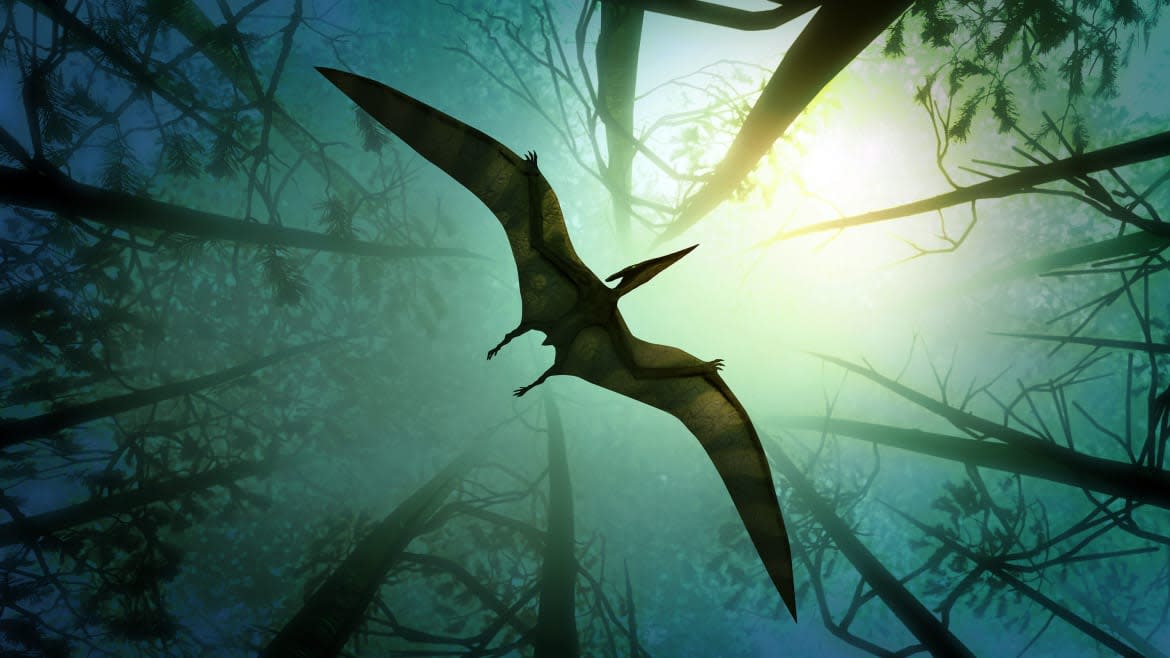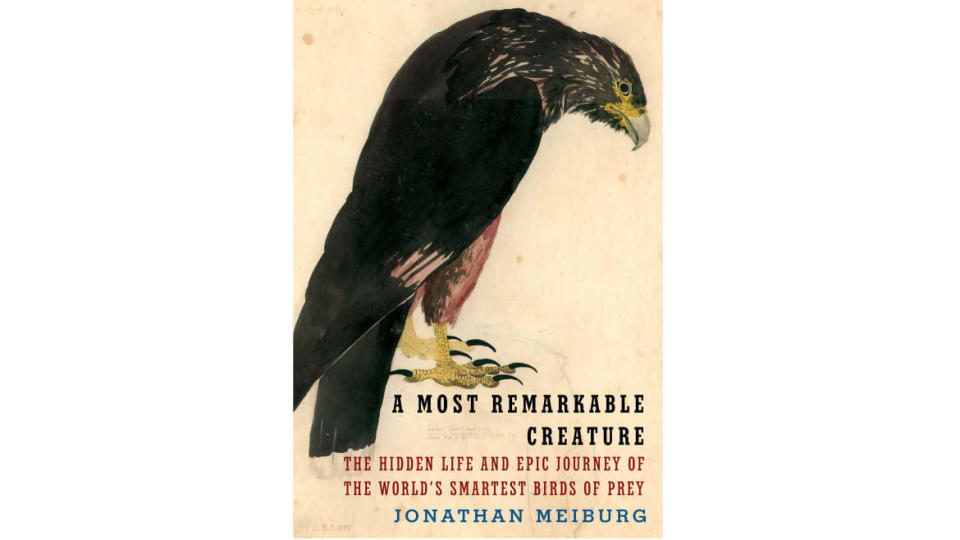Hunting for Flying Dinosaurs in a Remote Corner of the World

- Oops!Something went wrong.Please try again later.
- Oops!Something went wrong.Please try again later.
On a cold, barren mountaintop in southern Chile, Julia Clarke knelt to peer at the ground through a pair of ski goggles she wore against the wind and the high-latitude sun. Clarke, a tall, raven-haired paleontologist, was looking for the fossilized remains of flying dinosaurs, a skill for which she’s nearly legendary, and she’d paused at a place where something caught her eye. To me it looked no different from any other part of the slope we’d been ascending all morning, a confused jumble of reddish-brown boulders and scree, but Julia was unusually still in a way I’d come to associate with the moment she found a fossil.
“I think there’s a dinosaur here,” she said, carefully turning over a finger-sized fragment of ancient sandstone. “I think these bones are going into the cliff.” This seemed impossible to me, but Julia’s eye was rarely wrong; she’s known not only for finding new fossils but for finding hidden features in well-studied fossils that other paleontologists have overlooked. She’d spent years of her life on fascinating and uncomfortable expeditions to islands at the tip of the Antarctic Peninsula and the scorpion-filled wastes of the Gobi Desert, where she camped beneath a truck for months; among her discoveries is the oldest known syrinx, the unique organ that birds use to produce sound, which she spotted in the fossil of a duck-like bird that lived among its fellow dinosaurs in a warm Antarctica. She’d also helped reveal the colors of dinosaur feathers through microscopic fossil structures called melanophores, and was the first to realize that a mysterious lump of rock languishing in a Chilean museum was the egg of a mosasaur.
I’d imagined that prospecting for dinosaurs would be a slow, painstaking process, but Julia liked to move fast until she spotted something promising, and following her long stride up the mountain made me glad the southern Andes are much shorter than the mightier ranges farther north. We’d already passed up the preserved impressions of geoduck-sized clams and purplish lumps of sauropod bone, the remains of animals as large as a city bus—which amazed me, but failed to move her. “That stuff’s way too big,” she said. “I’m not carrying that around unless it’s a skull.”
Below us, two of Julia’s students, Sarah Davis and Hector Garza, were pacing deliberately up a Martian-looking slope, their eyes on the ground and their heads in the age of reptiles. To them, the exposed faces of the mountain were animal-rich slices of the deep past, its layered beds of sandstone a time capsule that preserved the versions of life that once thrived here. Sarah had found the curved tooth of a predator who probably looked something like a small T. rex, and Hector had turned up the more primitive-looking tooth of a mosasaur, a half-inch cone of shining black rock as straight as a railroad spike.
The remains of these two animals—one terrestrial, one marine— revealed this desolate mountain for what it was: a piece of the ancient coastline, intermittently drowned by the sea, that once joined South America to the Antarctic Peninsula. If Antarctica was indeed a haven for animals while the rest of the world burned, this was the bridge its residents would have crossed to enter (or reenter) South America. After the end-Cretaceous meteor struck the Earth, thirty million years would elapse before an undersea tongue of the Pacific plate wedged itself between the two continents. This didn’t just isolate them from each other; it removed the last barrier to the ocean’s unimpeded flow around Antarctica, and the circumpolar vortex was born. Over the next thirty-five million years, the great southern continent would slowly become the icebound landmass we know today—the coldest, driest, most inhospitable place on earth.
The fossils buried in the mountain where we stood were too old to shed light on the time after the asteroid’s impact, but they were a glimpse of the dinosaurs’ last years in a very special place: we were about as far south as you could be and still find Cretaceous fossils that aren’t buried under thousands of feet of ice.
Julia took a few samples of fossil bone and sealed them in a plastic bag, and after a brief rest we headed back down toward our camp, a cluster of orange and yellow tents in the grassy valley below. We were visiting for only a few days, but the tents housed a team of young Chilean paleontologists who’d been here for weeks, led by a bearded, charismatic paleobotanist named Marcelo Leppe. The stumps of ancient palm trees and the massive femur of a sauropod were among this season’s discoveries, but their most exciting find was a tiny molar, smaller than a pea—the tooth of a mammal who’d lived among the dinosaurs. It was the oldest mammal bone ever found this far south. Julia, however, was hoping to find an ancient bird, and she paused at a bowl-shaped pit of fine gravel and sand blown out by the wind. Places like this, she said, can leave delicate fossils lying on the surface—and within ten minutes she’d found two tiny teeth, along with a few lentil-sized plates of bone that might have been part of a turtle’s shell, or the scales of a small, armored lizard. Sarah logged the coordinates in her notebook.
“Let’s call this site ‘toothyplace,’” Julia said. “We’ll remember that.” I sat down at the edge of the pit, hoping to spot another tooth among its multicolored pebbles and slivers of petrified wood, but my eyes soon glazed over. I was about to give up when I noticed an odd impression in the pit’s surface, about the size of my hand. Its three slender lobes fanned out from a central point, and each lobe ended in a small, sharp divot, like the imprint of a claw. As I drew back, I saw that it was the deepest of a faint set of dinosaurian footprints, but they looked so fresh that I wondered if someone had etched them in the sand as a joke. I motioned to Sarah, who came over to look and fell silent. Even Julia was flummoxed for an instant, but then she smiled: they were the tracks of an Andean condor.
“Theropod dinosaur,” she said, without irony. “Isn’t it nice to know they’re still around?”

Excerpted from A Most Remarkable Creature: The Hidden Life and Epic Journey of the World’s Smartest Birds of Prey. Copyright © 2021 by Jonathan Meiburg. All rights reserved. No part of this excerpt may be reproduced or reprinted without permission from the publisher.
Get our top stories in your inbox every day. Sign up now!
Daily Beast Membership: Beast Inside goes deeper on the stories that matter to you. Learn more.

